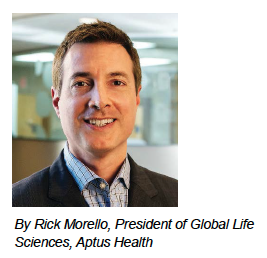Synchronizing HCP and Consumer Messages: At The Point of Care and Beyond
 Mobile devices have transformed the way we experience the world – including how we wait for things to happen. Look around any doctor’s office waiting room, or the line at the pharmacy, or the treadmills at your local gym. People are using their smartphones to read the news, check the weather, pay a bill, or be entertained.
Mobile devices have transformed the way we experience the world – including how we wait for things to happen. Look around any doctor’s office waiting room, or the line at the pharmacy, or the treadmills at your local gym. People are using their smartphones to read the news, check the weather, pay a bill, or be entertained.
This represents a terrific opportunity for marketers to engage their audiences through hyper-local, contextually relevant ads — when and where they are in a place that’s conducive to making health-related decisions. In fact, recent data from Kantar Media shows that adults who have seen advertising at the pharmacy or physician’s office are 84% more likely to discuss the ad with a physician and 68% more likely to ask a doctor to prescribe a specific product.
Anchor on location, layer on personas
We’re helping our life sciences clients leverage this opportunity, engaging their target healthcare consumers and healthcare professionals (HCPs) at these and other key points-of-care. Using the data and mobile network of over 100 million health consumers from Tomorrow Networks (a division of Aptus Health), our interactive mobile ads engage audiences through a wide range of popular news, weather, sports, and music apps.
The network makes it possible, but the data makes it relevant and impactful. Using a mix of proprietary, third-party, and client data, we anchor these campaigns based on location then optimize the content based on what we know about the mobile user’s digital footprint. This may include consumer purchasing patterns, possible formulary coverage, and likely interest in a given therapeutic category. The resulting data-driven personas allow us to effectively message differently to patient- consumers, physicians, and pharmacists who are in the same location where relevant decisions are likely to be made – bringing them together in conversations about pertinent treatments and therapies. These ads pull people in through quiz- like and other interactive experiences, helping them better internalize the message. Audiences click through to contextual content, such as branded educational content for physicians, or a copay voucher for consumers.
Predictive modeling engages an affinity network of HCPs
Where it gets even more interesting – and effective – is when we help our clients synchronize messages across different audiences and digital channels. Our HCP affinity network offers access to 600,000 physicians and other clinicians who actively engage in our wide array of digital channels including Univadis (a global destination site offering clinical news and education), our digital Sample Center, and the dozens of clinical
specialty publications offered by our partner Frontline Health Communications. Through these and other channels we offer HCPs relevant, valuable content through highly targeted emails, expert-led education, native ads, alerts, and more.
Based on the millions of interactions we’ve had with these HCPs over time through these channels, we’ve developed our own Aptus Propensity Index™ (APx), which is a predictive model that describes each HCP’s propensity to engage with various promotional channels. This helps determine the right mix of channels that will increase the likelihood that messaging will be seen, assimilated, and acted upon by members of a target physician audience.
Altogether, these data, channels, and analytical expertise result in a true multichannel campaign that synchronizes HCP, consumer, and pharmacist audiences. With all this under one roof, we’re able to closely monitor campaign performance and adjust as needed based on real-world data and audience insights. In fact, coordinated campaigns where we run coordinated messages to both consumer and HCP audiences have shown to drive incremental NRx lift, generating significant ROI in many cases. It’s a great way to boost awareness, pull-through formulary wins, and drive adoption of your brand.
Care to engage with us?
Learn more at aptushealth.com










